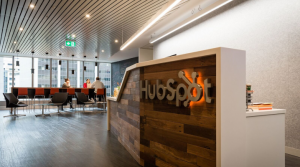Apple’s Strategy Hits a Sweet Spot: Getting Android Where it Hurts
![]() Earth, fire, wind, water… and there are smartphones. With our global love for technology going in this direction, it’s not surprising to see that smartphones are becoming a huge platform, full of opportunities especially for emerging operating systems. In the United States alone, two big names are battling it out head-to-head for the OS kingship: Apple and Google Android.
Earth, fire, wind, water… and there are smartphones. With our global love for technology going in this direction, it’s not surprising to see that smartphones are becoming a huge platform, full of opportunities especially for emerging operating systems. In the United States alone, two big names are battling it out head-to-head for the OS kingship: Apple and Google Android.
Android takes a late lead, becoming a primary driver of growth in the mobile phone industry. However, Apple and its array of iDevices are rallying towards the prime spot. Steve Jobs’ enterprise overtakes Android and gained 7% increase rate for the previous month.
A Nielsen study looks into Apple’s growth superseding that of Android, which fell flat this May: “Android continues to be the most popular smartphone operating system, with 38 percent of smartphone consumers owning Android devices. However, while Android also leads among those who recently purchased a new smartphone, it is the Apple iPhone that has shown the most growth in recent months.”
But do not count Android out just yet. While it fell flat to almost zero growth rate for the month, Google’s OS still holds the number one post. But Google faces an array of issues that may keep it from maintaining top billing amongst consumer preferences. Perhaps its all those sophisticated malware attacks taking its toll on Android already.
Nevertheless, Android continues to gain new users. Showing no retreat is Google’s VP for Mobile Andy Rubin who tweeted: “There are now over 500,000 Android devices activated everyday, and it’s growing at 4.4% w/w.”Apple is quick to accuse Google of including updates and reinstalls in these numbers.
The sweet sides of Apple’s strategy
To take a bite out of Apple, Android would have to accelerate their efforts, as reports of the upcoming iCloud and iPhone 5 are attracting so much attention from loyal and curious consumers alike. There are two significant strategies that Apple has been pushing lately: first is expanding device sales beyond AT&T, now looking to Verizon, Target, Best Buy and Walmart. The second piece is broadening its price range: the iPhone 3Gs is at its lowest price point ever, at $49. Apple’s now beginning to compete in the areas Android first won over, like widespread availability across carriers, and a range of prices for every consumer. Since breaking out the doors of AT&T, iPhone is becoming a top-selling smartphone, even at Verizon.
The current scenario of the mobile industry and marketers chasing local consumerism shows that more and more people are becoming highly dependent on their mobile gadgets to survive. Looks like Apple vs Android is a battle that shows no signs of ceding anytime soon.
A message from John Furrier, co-founder of SiliconANGLE:
Your vote of support is important to us and it helps us keep the content FREE.
One click below supports our mission to provide free, deep, and relevant content.
Join our community on YouTube
Join the community that includes more than 15,000 #CubeAlumni experts, including Amazon.com CEO Andy Jassy, Dell Technologies founder and CEO Michael Dell, Intel CEO Pat Gelsinger, and many more luminaries and experts.
THANK YOU













